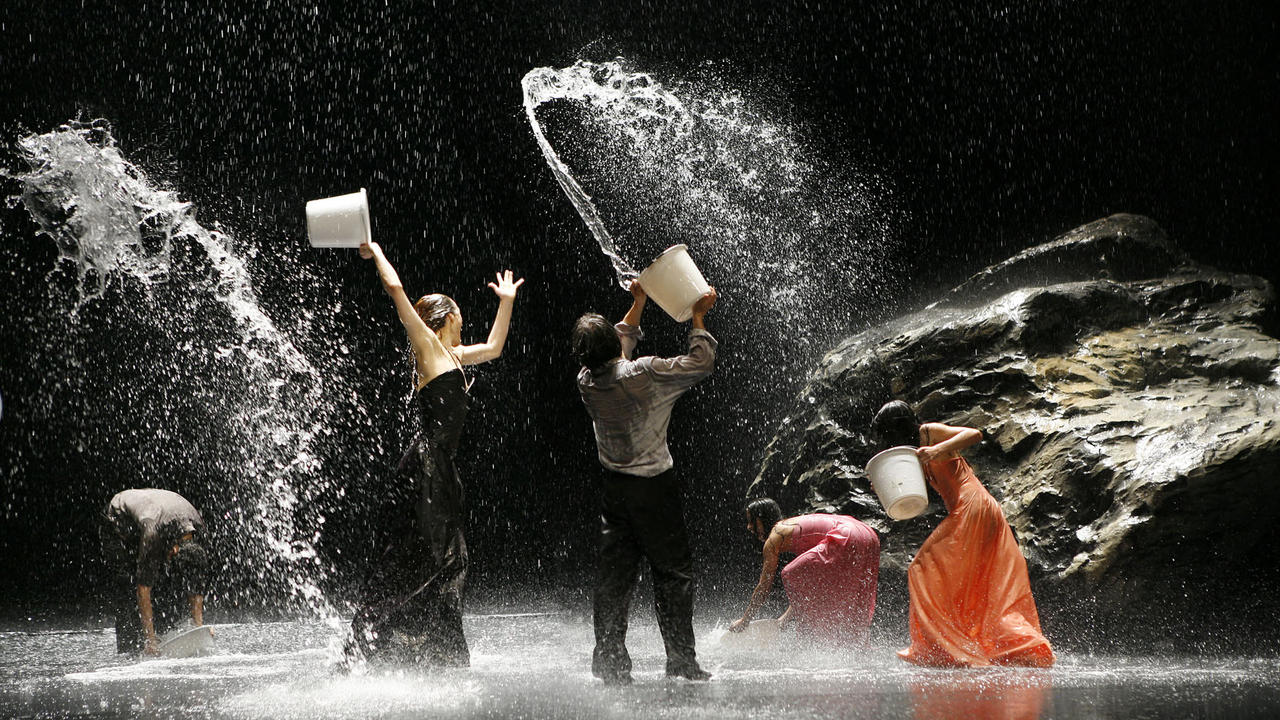Director: Wim Wenders,
Watched in: On-Demand and in Theater,
Rating: 5/5.
Pina is director Wim Wenders’ magnificently filmed memorial to the artistry and legacy of Pina Bausch, a German dance master whose work intoxicated the filmmaker more than twenty years ago but left him unsure how to replicate her three dimensional work within the two dimensional frames of film. Then 3-D came along and in 2009, days before he was set to begin filming, Pina Bausch died soon after receiving a cancer diagnosis. The movie was put on hold until Pina’s dancers convinced Wenders it was necessary to make the film, both as a remembrance of Pina and as an opportunity for her troupe to choreograph and stage their personal testimonials to her genius. The result is a dance documentary that breaks away from both the dance stage and the documentary form to create a bracing new type of documentary cinema, leaving out the talking heads, the requisite biographical data and the explanatory on-screen text in favor of a simple, purely visceral celebration of artistic bravery.
Pina’s visions for the dances she created seemed to emerge from the deep wells of desire and longing trapped inside every human being. She staged gripping performances of Sisyphean repetitions, physical drudgeries remade into expressions of hoped-for escape. She worked with elemental textures and energies: boulders and dirt, water and wind. Her dancers do not leap through the air like gazelles, they struggle against internal forces. The dances are muscular revolts against conventions. They are often as remarkable for what performers do with their hands as with their bodies.
Wenders takes his cameras into the streets, forests, buildings and trams of the troupe’s hometown, Wuppertal, Germany, and cuts these performances into montages which include set pieces and silent head shots of the dancers as they look offscreen, lost in thought, remembering Pina’s influence. Brief, sometimes enigmatic voiceovers of these dancers are the only spoken words in the film, an effect which creates an ethereal, dream-like mood, a world in which the hard work of learning to dance, or the finality of a too-early death, are immaterial to the transcendent works that form her legacy.
My only quibble with the film, a small complaint that dissipated as the movie progressed, concerns the use of 3-D technology to shoot the movie. As with Werner Herzog’s 3-D Caves of Forgotten Dreams I find the gimmick more distracting than enhancing. In Pina, the third dimension results in a regrettable electronic fluttering outlining the rapidly moving bodies, and does little to illuminate her work. I forgot about it after awhile, but this is due to the fact that her dancers and their remarkable skills have no need for cinematic trickery. The technology is rendered moot by the awesome, spellbinding power of the human body.
(I watched the film again in 2017 on my home screen, grateful that the 3-D effect was not an option).

